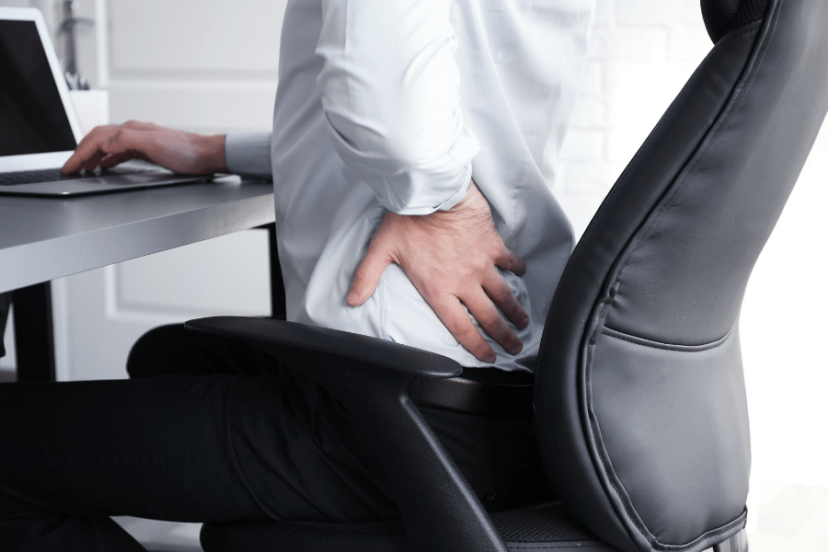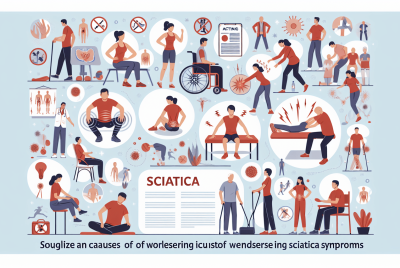Posture Correction: Exercises and tips for improving posture and reducing pain.
As a well informed & now reformed back pain sufferer, I want to share with you the best exercises and tips for improving posture and reducing back pain. Posture plays a crucial role in our overall health and well-being. It affects not only our physical appearance but also our musculoskeletal system, breathing, digestion, and even mental state. In this article, I will guide you through various exercises and provide helpful suggestions on how to correct your posture effectively & I do hope that this article; Posture correction: Exercises and tips for improving posture and reducing pain is helpful & life changing for you.
Understanding Posture and Its Importance
Posture refers to the alignment and positioning of our body parts, particularly the spine, in relation to gravity. Good posture maintains the natural curves of the spine, allowing optimal support and balance for the body. On the other hand, poor posture involves slouching, rounded shoulders, and a misaligned spine, which can lead to muscle imbalances, strain, and discomfort.
Having correct posture is vital for several reasons. Firstly, it helps prevent muscle and joint pain by reducing stress on the supporting structures of the body. Secondly, it enhances breathing and circulation, allowing organs to function optimally. Thirdly, good posture promotes proper digestion, as it allows the internal organs to align properly and function efficiently. Lastly, it contributes to a confident and positive body image, boosting self-esteem and overall well-being.
Common Causes of Poor Posture
There are several factors that contribute to poor posture. One of the main culprits is a sedentary lifestyle. Sitting for extended periods, whether at a desk or in front of a screen, can cause muscle imbalances and weaken the core and back muscles. Additionally, habits like slouching, hunching over electronic devices, and carrying heavy bags on one shoulder can also contribute to poor posture.
Furthermore, factors such as obesity, pregnancy, improper ergonomics, and lack of physical activity can exacerbate poor posture. It’s important to be aware of these causes in order to address them effectively and make positive changes.
The Impact of Poor Posture on Overall Health
Poor posture can have a significant impact on our overall health. It can lead to chronic musculoskeletal pain, including back pain, neck pain, and headaches. When the spine is misaligned, it puts excessive stress on certain muscles and ligaments, leading to discomfort and reduced mobility.
Moreover, poor posture can affect the functioning of internal organs. Slouching or compressing the abdominal area can hinder digestion and lead to issues such as acid reflux and constipation. It can also restrict the movement of the diaphragm, resulting in shallow breathing and decreased oxygen intake.
Exercises for Posture Correction
To correct and improve posture, a combination of stretching, strengthening, and postural awareness exercises is essential. Let’s explore some effective exercises that can help you on your journey to better posture.

Stretching Exercises
Stretching exercises focus on releasing tension and tightness in muscles that are commonly affected by poor posture. These exercises help elongate muscles, improve flexibility, and restore proper alignment.
Upper Body Stretches
Shoulder Rolls
Shoulder rolls are a simple exercise that helps relieve tension in the shoulders and upper back. Stand or sit upright, relax your arms by your sides, and gently roll your shoulders backward in a circular motion. Repeat this movement for 10-15 repetitions.
Chest Opener Stretch
The chest opener stretch helps counteract the forward rounding of the shoulders. Stand tall, interlace your fingers behind your back, and squeeze your shoulder blades together while lifting your hands away from your body. Hold this position for 20-30 seconds and repeat 2-3 times.
Neck Side Stretch
The neck side stretch targets the neck and upper trapezius muscles. Sit or stand with your back straight, tilt your head to one side, bringing your ear toward your shoulder. Hold this stretch for 15-20 seconds on each side, repeating 2-3 times.
Lower Body Stretches
Forward Fold
The forward fold stretch releases tension in the hamstrings and lower back. Stand with your feet hip-width apart, hinge forward from your hips, and let your upper body hang down. Keep your knees slightly bent and allow your arms to dangle or rest them on your thighs. Hold this position for 20-30 seconds and repeat 2-3 times.
Hip Flexor Stretch
The hip flexor stretch targets the muscles in the front of the hips, which can become tight from prolonged sitting. Kneel on one knee, with the other foot flat on the floor in front of you. Lean forward, keeping your back straight, until you feel a gentle stretch in the front of your hip. Hold for 20-30 seconds on each side, repeating 2-3 times.
Standing Quadriceps Stretch
The standing quadriceps stretch helps release tension in the front of the thighs. Stand tall, lift one foot off the ground, and grab your ankle, gently pulling it toward your glutes. Keep your knees close together and your torso upright. Hold for 20-30 seconds on each leg, repeating 2-3 times.
Strengthening Exercises
In addition to stretching, strengthening exercises are crucial for improving posture. These exercises target the core, back, and other muscle groups, helping to build strength and stability.
Core Strengthening
Plank
The plank is a fantastic exercise for strengthening the core muscles, which play a vital role in maintaining good posture. Start by getting into a push-up position, with your hands shoulder-width apart and your toes on the ground. Engage your core and hold this position for 30-60 seconds, or as long as you can maintain proper form.
Bridge
The bridge exercise targets the glutes, hamstrings, and lower back muscles. Lie on your back with your knees bent and feet flat on the ground, hip-width apart. Press your heels into the ground, engage your glutes, and lift your hips off the floor until your body forms a straight line from your knees to your shoulders. Hold for 10-15 seconds and lower down. Repeat for 10-12 repetitions.
Superman Pose
The superman pose strengthens the muscles of the lower back and glutes. Lie facedown on the floor with your arms extended overhead and your legs straight. Simultaneously lift your arms, chest, and legs off the ground, keeping your gaze down to maintain a neutral neck position. Hold this pose for 10-15 seconds and lower down. Repeat for 10-12 repetitions.
Back Strengthening
Bird Dog
The bird dog exercise targets the deep core muscles, back extensors, and glutes. Begin on your hands and knees, with your hands directly under your shoulders and knees under your hips. Extend your right arm forward while simultaneously lifting your left leg backward, keeping your hips level. Hold this position for 5-10 seconds, then switch sides. Repeat for 10-12 repetitions on each side.
Prone Cobra
The prone cobra exercise strengthens the muscles of the upper back and improves spinal extension. Lie facedown on the floor with your arms by your sides and your palms facing down. Lift your chest and arms off the ground, squeezing your shoulder blades together. Hold for 5-10 seconds, then lower down. Repeat for 10-12 repetitions.
Rowing Exercise
The rowing exercise targets the muscles of the upper back, shoulders, and arms. Sit on the floor with your legs extended in front of you. Hold a resistance band or tubing in front of you with your arms extended. Squeeze your shoulder blades together and pull the band toward your chest, bending your elbows. Slowly return to the starting position. Repeat for 10-12 repetitions.
Posture Awareness and Alignment
Alongside exercises, being aware of your posture throughout the day and making conscious adjustments can significantly contribute to better posture and reduced back pain. Here are some tips to help you maintain proper alignment and posture. There are many types of products available to assist & aid posture & provide support
Ergonomic Considerations
Proper Desk Setup
When sitting at a desk for extended periods, it’s essential to have an ergonomic setup. Position your computer monitor at eye level, directly in front of you. Ensure your chair is adjusted to support your lower back and maintain a 90-degree angle at your hips and knees. Use an ergonomic keyboard and mouse to minimize strain on your wrists and hands.
Supportive Chair and Pillow
Invest in a chair that provides good lumbar support to maintain the natural curve of your lower back. If necessary, use a small pillow or lumbar roll to support the lower back and encourage proper posture. Ensure the chair is at an appropriate height, allowing your feet to rest flat on the floor or on a footrest.
Body Mechanics
Lifting Techniques
When lifting objects, it’s crucial to use proper body mechanics to avoid straining your back. Bend your knees and squat down, keeping your back straight. Use the strength of your legs and core to lift the object, rather than relying on your back muscles. Hold the object close to your body and avoid twisting while lifting or carrying.
Carrying Bags and Backpacks
When carrying bags or backpacks, distribute the weight evenly on both sides of your body. Opt for bags with wide, padded shoulder straps to reduce strain on your shoulders and neck. If possible, use a backpack with a waist belt to distribute the weight more evenly across your body.
Tips for Maintaining Good Posture Throughout the Day
In addition to exercises, incorporating good posture habits into your daily routine is crucial for long-term improvement. Here are some tips to help you maintain good posture throughout the day.
Sitting Posture
Sitting with Proper Back Support
When sitting, ensure that your back is supported by the chair, especially the lower back region. Use a cushion or rolled-up towel to support the natural curve of your lower back if needed. Avoid slouching or leaning forward for extended periods.
Adjusting Chair Height and Position
Adjust your chair height so that your feet are flat on the ground or on a footrest, with your knees at a 90-degree angle. Keep your hips slightly higher than your knees to maintain proper alignment. Position your chair close to the desk or workstation to minimize reaching forward.
Taking Regular Breaks
Take regular breaks from sitting every 30 minutes to an hour. Stand up, stretch, and walk around to counteract the negative effects of prolonged sitting. Incorporate movements like shoulder rolls, neck stretches, and back extensions during these breaks.
Standing Posture
Aligning Shoulders, Hips, and Ankles
When standing, align your shoulders over your hips and ankles, creating a straight line from your head to your feet. Avoid slumping or leaning to one side. Engage your core muscles to support your spine and maintain proper alignment.
Engaging Core Muscles
Contracting your core muscles can help stabilize your spine and maintain good posture while standing. Imagine pulling your belly button toward your spine to activate the deep abdominal muscles. This will provide support and reduce strain on your back.
Using Supportive Footwear
Wearing supportive footwear can have a positive impact on your posture, especially when standing for extended periods. Opt for shoes with cushioning, arch support, and a comfortable fit. Avoid high heels or shoes that force your feet into unnatural positions.
Conclusion
Maintaining good posture is crucial for overall health and well-being. By incorporating stretching and strengthening exercises, being aware of posture, and making conscious adjustments, you can improve your posture, reduce back pain, and enhance your overall quality of life. Remember to be consistent in practicing these techniques and be patient, as it takes time to develop new habits and see significant improvements.
Additional Resources About Posture Correction
- The Role of Physical Exercise in Correcting Posture: This study discusses the positive impact of physical exercise on improving posture. It specifically highlights exercises that target the musculoskeletal imbalances caused by poor posture.
- Sedentary behavior and musculoskeletal discomfort are reduced when office workers trial an activity-based work environment: This commentary discusses the effects of a sedentary lifestyle on posture, suggesting ways to incorporate more movement into the workday to counteract the negative impact on posture. It discusses ergonomic considerations and the benefits of taking breaks to move and stretch during the day.
FAQs
Q: Can poor posture be corrected at any age?
Yes, it is possible to correct poor posture at any age. While it may be easier to make changes in younger individuals, people of all ages can benefit from exercises, postural awareness, and ergonomic adjustments. It’s never too late to start working on improving your posture.
Q: How long does it take to see improvements in posture?
The time it takes to see improvements in posture can vary depending on various factors, including the severity of the postural issues and the consistency of exercise and postural correction practices. With regular practice and conscious effort, you may start noticing positive changes within a few weeks to a few months.
Q: Are there any specific exercises to avoid if you have back pain?
If you have existing back pain, it’s important to consult with a healthcare professional or a qualified physical therapist before starting any exercise regimen. They can provide personalized guidance and recommend exercises that are safe and appropriate for your condition.
Q: Can wearing a posture brace help improve posture?
Posture braces or posture correctors can provide temporary support and remind you to maintain good posture. However, it’s important to note that relying solely on a brace may not address the underlying muscle imbalances and postural issues. They should be used in conjunction with exercises and postural awareness for long-term improvement.
Q: Can yoga or Pilates help improve posture?
Yes, yoga and Pilates can be beneficial for improving posture. These practices focus on strengthening the core muscles, increasing flexibility, and promoting body awareness, all of which contribute to better posture. It’s recommended to join a class or work with a qualified instructor to ensure proper technique and alignment.




